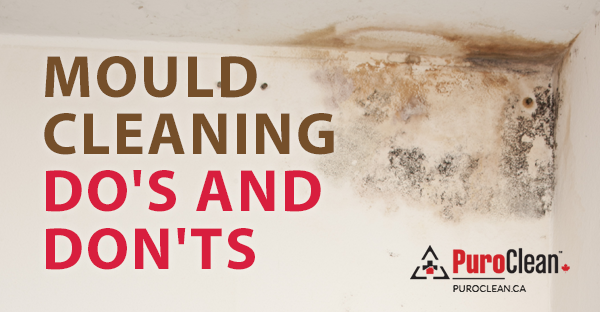The PuroClean Blog
Learn About Mould Cleaning Do’s and Don’ts
 Mould often grows in buildings where moisture levels are not kept under control. This type of fungi can cause respiratory health issues and property deterioration, so it is important to know how to prevent mould in the first place. Once faced with a mould problem, property owners need to decide whether to attempt to clean it themselves or call a professional. Here are our recommendations:
Mould often grows in buildings where moisture levels are not kept under control. This type of fungi can cause respiratory health issues and property deterioration, so it is important to know how to prevent mould in the first place. Once faced with a mould problem, property owners need to decide whether to attempt to clean it themselves or call a professional. Here are our recommendations:
- Action must be taken immediately. When noticing mould, property owners should deal with it themselves or call a professionals to treat large areas affected with mould as soon as possible.
- Bleach should not be used. Bleach kills live mould, but not the mould spores. In fact, if bleach and water are used to clean mould, it can result in faster mould growth. Household detergent may be used instead.
- Safety must be ensured. Because mould can cause health problems, those who clean it must wear gloves, a dust mask and eye protection.
- The source of the moisture must be fixed. Since mould grows on wet or moist surfaces, it is important to first fix the water problems before cleaning. The leaks that produce moisture should be identified and fixed.
- Small areas need to be cleaned. Once the moisture problem has been fixed, mould from areas less than 10 square feet can be removed by scrubbing a mixture of household detergent and water on the surface.
- The affected areas should be dried. After cleaning the mould, the areas must be dried in order to prevent mould growth from reoccurring. Fans can be used to speed up the drying process.
- For areas larger than 10 square feet, we recommend contacting PuroClean’s mould remediation experts who will identify the moisture source and then rescue and restore the affected surfaces using state-of-the-art equipment, techniques and processes.
As Benjamin Franklin once said, “An ounce of prevention is worth a pound of cure”. In other words, immediate action is essential in stopping a mould problem before it escalates: follow our 10 Best Tips for Mould Prevention (From the Mould Remediation Experts).
Follow us on Twitter, Facebook, Google+ and LinkedIn to get our notifications!
May 11, 2015



